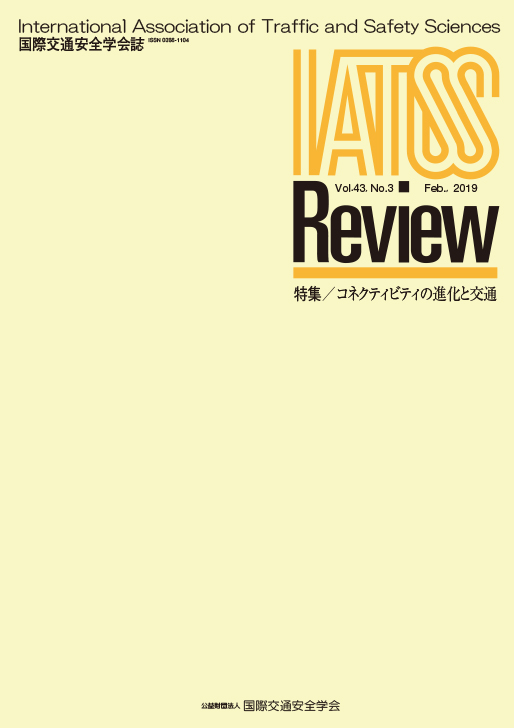Volume 43, Issue 3
Evolution of Connectivity and Transportation
Displaying 1-11 of 11 articles from this issue
- |<
- <
- 1
- >
- >|
Opinions
-
2019 Volume 43 Issue 3 Pages 125
Published: February 28, 2019
Released on J-STAGE: March 21, 2019
Download PDF (396K)
Special Supplement : Evolution of Connectivity and Transportation
Introduction
-
2019 Volume 43 Issue 3 Pages 126-127
Published: February 28, 2019
Released on J-STAGE: March 21, 2019
Download PDF (284K)
Information
-
2019 Volume 43 Issue 3 Pages 128-138
Published: February 28, 2019
Released on J-STAGE: March 21, 2019
Download PDF (3079K)
Information
-
2019 Volume 43 Issue 3 Pages 139-147
Published: February 28, 2019
Released on J-STAGE: March 21, 2019
Download PDF (2494K)
Information
-
2019 Volume 43 Issue 3 Pages 148-155
Published: February 28, 2019
Released on J-STAGE: March 21, 2019
Download PDF (2193K)
Review
-
2019 Volume 43 Issue 3 Pages 156-163
Published: February 28, 2019
Released on J-STAGE: March 21, 2019
Download PDF (2615K)
Information
-
2019 Volume 43 Issue 3 Pages 164-170
Published: February 28, 2019
Released on J-STAGE: March 21, 2019
Download PDF (1511K)
Information
-
2019 Volume 43 Issue 3 Pages 171-180
Published: February 28, 2019
Released on J-STAGE: March 21, 2019
Download PDF (1584K)
Report
-
2019 Volume 43 Issue 3 Pages 181-189
Published: February 28, 2019
Released on J-STAGE: March 21, 2019
Download PDF (3227K)
Contribution
Paper (Peer reviewed)
-
2019 Volume 43 Issue 3 Pages 190-196
Published: February 28, 2019
Released on J-STAGE: March 21, 2019
Download PDF (680K)
Note (Peer reviewed)
-
2019 Volume 43 Issue 3 Pages 197-204
Published: February 28, 2019
Released on J-STAGE: March 21, 2019
Download PDF (651K)
- |<
- <
- 1
- >
- >|
